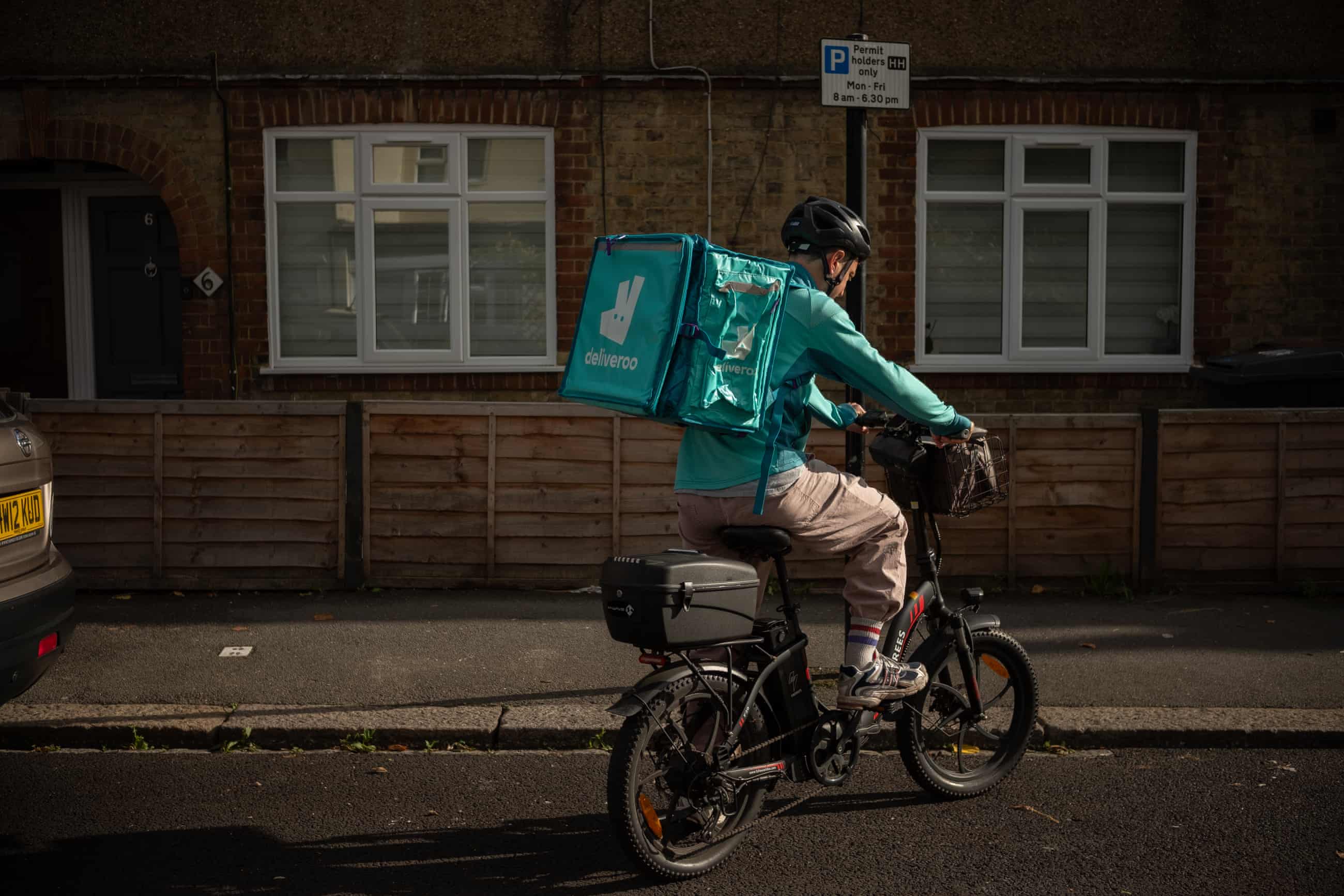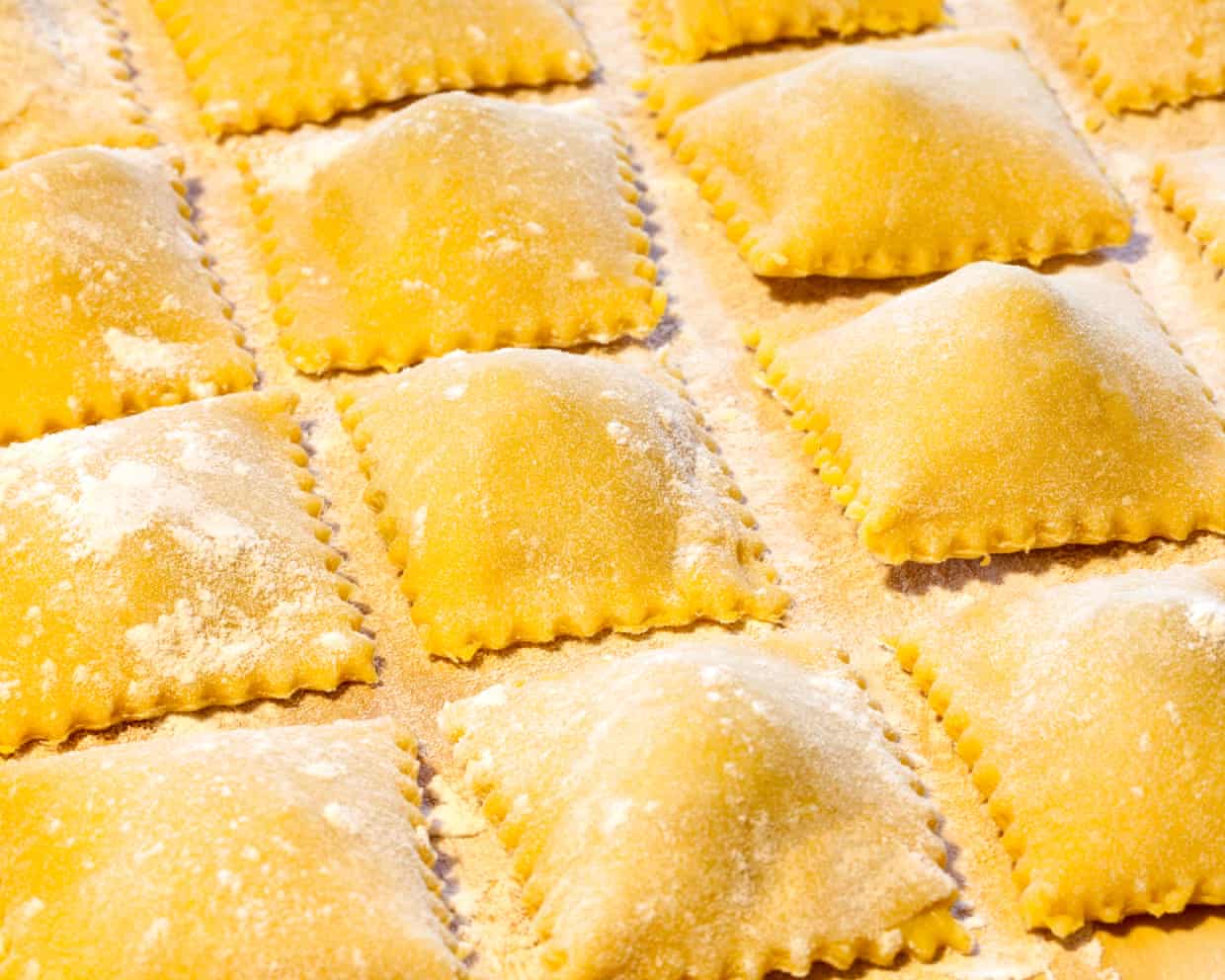Life as a food delivery worker: ‘Sometimes men open the door naked’

To earn a living as a delivery rider, some work 10-12 hour days, contending with low pay, exhaustion, accidents, injuries and harassment.Is this a new form of modern slavery?“I earn more cleaning toilets than I do from being a Deliveroo rider,” says Marina, a Brazilian woman who juggles two jobs to support her 12- and 18-year-old daughters.It’s a “bullshit, horrible job”, says Adam, from Sudan, who combines riding for Deliveroo with studying for a law degree.“On a good day I can earn £50 or £60, although it’s really hard doing deliveries using a pedal bike.”“As humans we are invisible to the people we deliver to,” says Mohammed, a Syrian refugee who also works as a Deliveroo rider.
“People don’t think about our struggles and our dreams,I’ve heard people in this country talk about second-class citizens; delivery riders are actually third-class citizens,”Marina, Adam and Mohammed are just a few of the hundreds of thousands of food delivery riders in the UK, mostly working for the big three players, Just Eat, Deliveroo and Uber Eats,Most are migrants, according to the riders themselves,Deliveroo, which says it has about 73,000 riders across the UK and Ireland, describes them as a “multitude of nationalities”.
The government has been clamping down on people working illegally in the food delivery industry, but those the Guardian interviewed in London, Liverpool and Manchester say they are working legally in challenging, low-paid conditions that many Britons would find unacceptable.And it’s not just at Deliveroo: they all say they have had similar experiences while working for other platforms.“I have worked for all of them over the past few years,” says Marina.“At different times one company has paid a bit more or a bit less than the others, but today in terms of pay and working conditions they’re all pretty much the same.”Men dominate this work but Marina is one of about 800 members of a UK WhatsApp group for female riders from Brazil.
Here they swap advice on how to deal with hazards such as exhaustion, low pay and accidents and injuries, as well as harassment from male customers,“Sometimes men open the door to female riders naked or in their underwear,” says Marina,“One man I delivered food to tried to pull me inside his house,Another slapped me across the face in the street,Doing this job makes you feel that you are not a human being, just a delivery machine.
”“Everyone assumes all riders are working illegally, which is not the case,” adds Rayan, from Pakistan.“We are vulnerable to being attacked – I’ve been attacked twice by teenagers who were just doing it for fun.We are invisible and exposed at the same time.”None of the riders the Guardian spoke to said they had ever met a boss from any of the platforms in person.All said their only interaction was with the app, which offers them deliveries that are available and the fee they will be paid – sometimes only about £3.
“We are a very modern kind of slave,” says Mohammed.“The slave driver is the app that sends us our orders.”All the riders told the Guardian that they loathe delivery work, but have no choice if they want to earn money legally.Visa and residency conditions mean that many do not have the right to do jobs defined as “highly skilled” by the government.Sunny days are the worst for delivery riders, as potential customers are more likely to leave home and pick up their own food.
Riding along dark streets, slippery with rain and with poor visibility, increases the risk of accidents.But at least they will be earning.Rayan, an English graduate who dreams of becoming a professor of English literature and writing novels, says the only way he can get by is by working for as many hours as he can bear without taking a break.“Sometimes I am so cold I want to go home and thaw out.When it’s really icy I have to defrost my legs with a hairdryer.
The chill of the wind and rain turns my skin white.The thought of going out on the road again after warming up is too much to bear.”Some days he works in four pairs of socks, three pairs of trousers and two jackets.“I still dream of becoming an English professor one day but things don’t always work out the way you want them to.I came here thinking I had a job lined up with a sponsor but I was tricked.
There was no sponsor, so I am doing deliveries, working 10- to 12-hour days or for as long as I have the energy.”When he started to work as a delivery rider he used to borrow books from the library to read while he was waiting for orders to come through.“My favourite author is Dostoevsky, who I call the ‘magician of writing’.I particularly love The Idiot, but I don’t read any more because I’m too tired.This work has just drained everything out of me.
”Rayan says that riders on bicycles can earn about £300 per week, while those on mopeds can earn about £450, but the latter group have to pay insurance and fuel costs.“I don’t earn enough to support my wife and child, so I have had to take out a loan just to get by.”The feeling among riders that they have been “deleted” as humans from the business model comes up again and again.They see themselves as simply a mechanism joining three dots – the delivery company, the shops or restaurants where they pick up the orders, and the customers who receive the food.“All we riders can think about is money and how to keep going in order to earn enough to survive,” says Rayan.
Bruno, from Brazil, describes himself as a “dinosaur” because he has been doing Deliveroo work for six years.“Many people can’t speak English, and this is a job they can do without needing to speak the language,” he says.“I continue doing it because I have a son I need to drop off and collect from school, and I need work that has flexibility.”A team of researchers at Birmingham University, led by Professor Nando Sigona, recently published research about the exploitation of migrants doing delivery and domestic work.“The UK food delivery sector has become a ‘testing ground’ for a new model of migration governance,” he says.
This work is advertised as “flexible” and “empowering”, but in reality “it fuses work automatisation, digital surveillance and immigration enforcement.”Working conditions have become harsher since March, he says, when immigration checks increased as part of a crackdown on illegal working.“These changes have effectively embedded the hostile environment into platform work.This is a system where migrant workers are tolerated only as long as they remain silent, flexible and invisible.It’s time for a policy reset that puts workers’ dignity and rights at the centre.
”While the supreme court ruled in 2021 that Uber drivers were “workers” rather than independent contractors, entitling them to certain basic rights, the same court declared in 2023 that delivery riders are self-employed due to a “substitution clause”, a contractual provision allowing them to send someone else to work in their place,Unions continue to fight for more rights for this group of workers,The GMB has a voluntary agreement with Deliveroo, for example, that is meant to ensure riders are paid at least the national minimum wage plus costs for the time they are on an order,However, if they are only sent one or two orders in an hour they are unlikely to earn the hourly national minimum wage,“Food delivery platforms have found in the gig economy a dial that allows them to turn back the clock on workers’ rights,” says Alex Marshall, president of the International Workers’ Union of Great Britain, which also has delivery rider members.
“The result is a workforce plagued with financial, physical and mental health struggles.With such low pay, riders are forced to take dangerous risks on the road to shorten delivery times.With no holiday pay, they get no time to rest.And with no hourly wage they are kept in constant anxiety about whether or not they will be able to make ends meet that week.”The delivery platforms reject this characterisation.
“The overwhelming majority of riders tell us they are satisfied working with us,” a spokesperson for Deliveroo says,“We are always looking at ways to raise the quality of self-employed work,We were the first major delivery platform to support unionisation and voluntarily partner with the GMB,Earlier this year we increased riders’ minimum hourly earnings guarantee and have introduced numerous valuable protections, such as free insurance, sickness cover and financial support when riders become new parents,”“The safety and wellbeing of everyone who uses our platform is our top priority,” says Uber Eats, “and there are a number of safety features designed for couriers … We offer a flexible way for thousands of couriers to earn while being able to choose when, where, and for how long they work.
While the vast majority are satisfied with their experience on the app, we work closely with our union partner, GMB, to ensure couriers’ interests are always represented.”“Our pay rates are competitive,” says Just Eat, “and data shows that couriers delivering for Just Eat earn, on average, significantly over the national living wage for the time they are on an order.We want all couriers on our network to work safely and we give extensive support on topics from road safety to customer interactions.”Ahmed came to the UK from Turkey with a start-up business visa almost three years ago, but turned to delivery rider work when his business struggled.“For a single person renting one room it is just about possible to survive on delivery rider income,” he says.
“But I don’t see anyone who has a family being able to afford to rent a flat on this money.If you use a pedal bike you don’t have the cost of insurance and fuel that moped riders have, but the cycling burns so much energy that you need more calories, so you have to build in the extra food costs to your budget.My legs have changed shape from all the cycling I do.I think twice about working at night because I have seen some people targeted by racists – people who think immigration is a problem for this country.”For now, Marina says she will continue to juggle bringing up her children with house cleaning and delivery rider work.
“I am doing this so I can put food on the table for my daughters.We are human beings and we are doing hard, honest work, but because we are migrants we don’t have the same value.My older daughter has started college and is studying health and social care.I hope that by supporting my kids with my food delivery riding I can help them break the cycle of poverty and ensure they won’t have to do this work.”

Benjamina Ebuehi’s recipe for apple, brown butter and oat loaf | The sweet spot
I adore a good loaf cake. There’s something about them that’s just inherently cosy and wholesome, and this one in particular is perfect for the colder months, not least because it’s simple and sturdy in the very best way. It’d be right at home with a coffee for breakfast, as well as gently warmed in a pan with butter and served with hot custard on a rainy evening. A real all-rounder.Prep 5 min Cook 1 hr 25 min Serves 8180g unsalted butter 200g light muscovado sugar 2 large eggs 50g soured cream 210g plain flour ½ tsp cinnamon 40g porridge oats, plus extra to finish1½ tsp baking powder ¼ tsp salt 2 eating apples 2 tbsp demerara sugarHeat the oven to 180C (160C fan)/350F/gas 4 and grease and line a 2lb loaf tin

Kids have a wobble in the face of rabbit jelly | Brief letters
I sympathise with Tim Dowling and the challenges of releasing blancmange from a rabbit mould (Jelly’s back! Here are three worth making – and three that should wobble off to the bin, 12 November). My mistake was adding chopped pineapple to the jelly mix, with the resulting jelly looking as though we were seeing the undigested contents of a rabbit’s stomach. My children refused to eat it.Dee ReidTwyford, Berkshire Tim Dowling has missed out one important ingredient from his otherwise commendable recipe for blancmange rabbit: the two sultanas you stick on for the eyes.Jane GregoryEmsworth, Hampshire Regarding concerns over Epstein Road in Thamesmead (Letters, 12 November), spare a thought for those unfortunate residents of Savile Row in central London

Think autumn, think Piedmont – wine from ‘the foot of the mountain’
By the time this column comes out, it will be Big Coat weather, so those collars will be getting higher and the scarves thicker. And, when there’s a chill in the air, I like to eat food than leans towards smoky and earthy flavours: charred vegetables, stews, sausages and mushroom everything.The Guardian’s journalism is independent. We will earn a commission if you buy something through an affiliate link. Learn more

‘I’m now a one-issue voter’: US shoppers fear Italian pasta tariff will cause shortage
On Monday night, Kelly planned to make dinner and spend the night inside with her family. Instead, she told her husband to put the kids to bed so she could get in the car, drive to Wegmans and “panic buy” $100 worth of Rummo pasta.Kelly, a 42-year-old product manager who lives outside Philadelphia, has celiac disease, which means that eating gluten triggers an immune response that leads to digestive issues. She saw fellow gluten-free people on Reddit and TikTok freaking out over the fact that the US is mulling a 107% tariff on Italian pasta imports. According to the Wall Street Journal, the hike could lead to those companies withdrawing from the US market as early as January

Jimi Famurewa’s recipe for puff-puff pancakes
Efteling is a fairytale-themed, 73-year-old amusement park in the south of the Netherlands that, after two consecutive years of visits, has become an acute obsession among my family. We love the vaguely folk-horror animatronic trees, witches and giant sea monsters lurking within a labyrinthine real forest. We love the anthropomorphised talking bins that plead (in a haunting, perpetual sing-song) for crumpled pieces of paper to be shoved into their suction-powered mouths. We love the inventive rides that, variously, judder along rattling wooden tracks, plunge cursed pirate ships into water, or nudge gondolas serenely through sylvan scenes of bum-flashing goblins showering beneath waterfalls.But our very favourite thing about the place might well be the poffertjes stand, a perennially busy kiosk where exhausted families gather for dinky paper boats filled with these yeast-puffed and sugar-dusted miniature buckwheat pancakes that are a Dutch institution

Polpa position: budget tinned tomatoes score well in Choice taste test
Consumer advocacy group Choice has taste-tested 18 brands of chopped and diced tomatoes, finding three cheaper cans outranked many more expensive brands.Four judges ranked tinned tomatoes from Australian supermarkets and retailers, assessing them on flavour, texture, appearance and aroma – with flavour accounting for the biggest percentage of overall scores.Italian brand Mutti’s Polpa Organic chopped tomatoes, costing $2.95 for a 400g tin, was awarded the highest score of 80%. It was the most expensive product tested, described by judge Fiona Mair (who also judges at the Sydney Royal Fine Food Show) as having “an earthy fresh tomato aroma, really rich juice and flesh”

Seth Meyers on Trump: ‘The most unpopular president of all time’

Colbert on Trump and Epstein: ‘They were best pals and underage girls was Epstein’s whole thing’

Colbert on Trump ‘building a massive compensation for his weird tiny penis’

‘I really enjoyed it’: new RSC curriculum brings Shakespeare’s works to life in UK classrooms

Jon Stewart on government shutdown deal: ‘A world-class collapse by Democrats’

Old is M Night Shyamalan at his best: ambitious, abrasive and surprisingly poignant